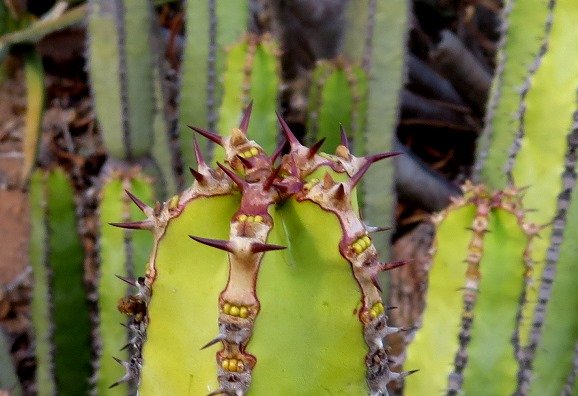Euphorbia avasmontana var. avasmontana stem-tip

Glossy brown spine pairs angle sideways, spaced along the (only) five vertical ridges growing from the top of this Euphorbia avasmontana var. avasmontana stem. They have grown bigger from kinder nutrition levels than their predecessors lower down had enjoyed in their youth. Consequently they promise a vigorous defence, provided that the enemy (read any trespasser), makes the moves.
Horizontal rows of three little pale yellow dots, like the letter S in Morse Code, occur on the stem ridges alternating with the spines. (The letter O is produced orally by the victim. This is done only once he, she or it contacts the spines and completes the distress signal, should the pain allow for accurate sequencing of an SOS.)
The little dots will change, as every flower-like bride does after a day or so: They represent only the first phase of flowering. The cyathia, flowers or really false flowers expand from the tiny bud beginnings, standing up proudly in due course on small peduncles like real flowers.
When it grows up, the central flower will show itself to be a male producing pollen. The outer pair will be full, bisexual flowers; the male a spare just to make sure (Frandsen, 2017; iNaturalist).

